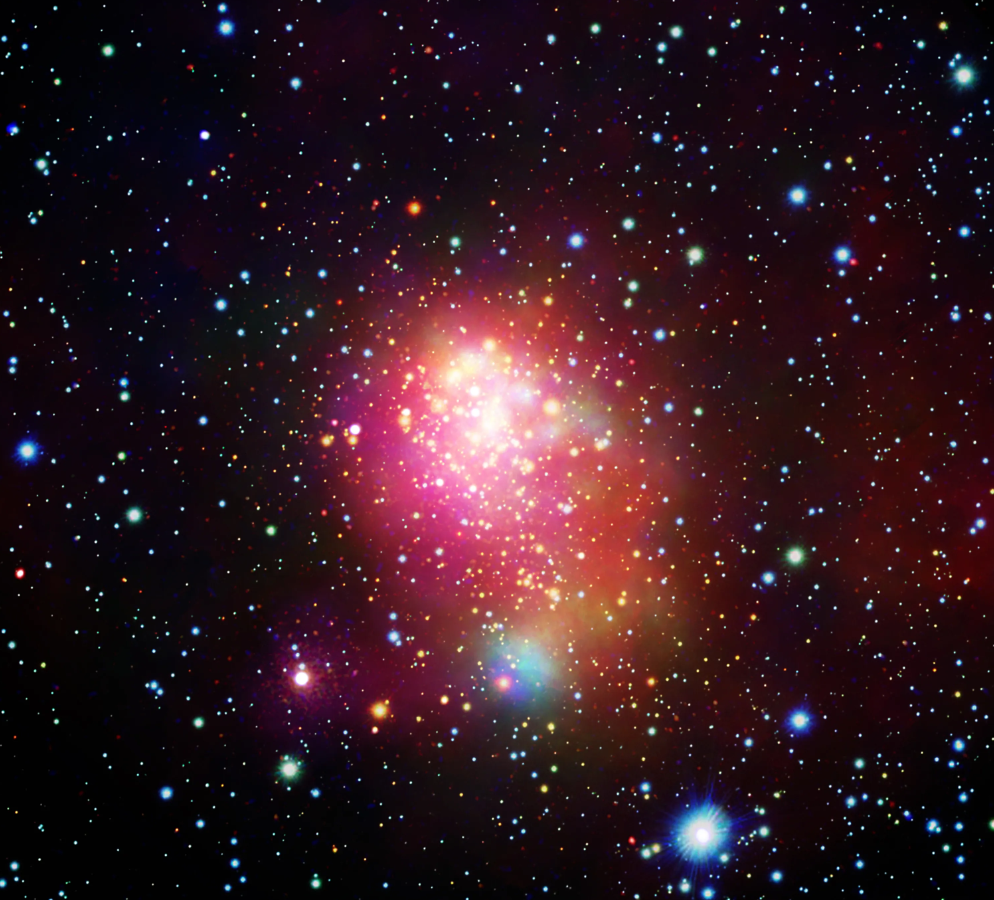NASA's Chandra X-ray telescope captures closest super star cluster to Earth (image)
A new image shows Westerlund 1, the largest and closest super star cluster to Earth, in stunning detail.

It's a bird... it's a plane... it's a super star cluster! NASA's Chandra X-ray telescope has imaged a star cluster that is "super" in every way. Westerlund 1 is super-large, super-massive, super-young, super-close — and it is creating stars at a super-fast rate.
Westerlund 1 is located around 13,000 light-years away from Earth — meaning it's very close, relatively speaking — and the 3 million to 5 million-year-old star cluster is around 7 light-years wide. If that age doesn't seem particularly young to you, remember that our middle-aged solar system is about 4.6 billion years old. Westerlund 1 also has a mass equivalent to as many as 100,000 suns, and it is one of the few remaining super star clusters in the Milky Way.
Down the line, studying Westerlund 1 could help astronomers better understand the internal workings of these cosmic star factories. The image is part of the first data released from the Extended Westerlund 1 and 2 Open Clusters Survey (EWOCS), led by astronomers from the Italian National Institute of Astrophysics in Palermo. As part of the EWOCS program, Chandra watched Westerlund 1 for a total of around 12 days.
Related: The Milky Way's last major act of galactic cannibalism was surprisingly recent
In its current epoch, the Milky Way produces very few stars, with just a handful of stellar bodies generated each year. However, our galaxy wasn't always so quiet. It once produced vastly more stars; at its peak around 10 billion years ago, it birthed between dozens and hundreds of stars every year.
Astronomers believe this intense star formation was mainly localized in super star clusters like Westerlund 1. These are young star clusters with masses at least 10,000 times that of the sun.

The X-rays from Westerlund 1, seen by Chandra and visible in the image as pinks and whites, are from young stars. Meanwhile, blobs of pink, green and blue represent diffuse heated gas throughout the supercluster.
Get the Space.com Newsletter
Breaking space news, the latest updates on rocket launches, skywatching events and more!
The new Chandra data has tripled the number of known X-ray sources in Westerlund 1. Prior to the EWOCS project, Chandra had detected 1,721 X-ray sources in the superstar cluster; the EWOCS data, on the other hand, has revealed almost 6,000 X-ray sources. These include faint stars with masses lower than that of the sun.
This gives astronomers a new population of stars in Westerlund 1 to study. That means, not only does the proximity of Westerlund 1 make it a good target for investigating star formation as a whole and decoding how such star-cluster environments impact planet birth, but the super star cluster is also useful for examining how stars with different masses evolve.
Chandra also found that 1,075 of the stars it detected are crammed into a 4-light-year-wide region at the heart of Westerlund 1. To picture just how dense this region is with stars, consider that there are 4.24 light years between the sun and its closest stellar neighbor, Proxima Centauri.
The more diffuse blob of pink that dominates the Chandra image of Westerlund 1 represents a halo of hot gas at the center of the super star cluster. Not only could this aspect of this region help deliver a more precise mass estimate of Westerlund 1, but it could also help assess how this particular collection of stars came to be and how it has changed over time.
The EWOCS results are discussed in a paper published in February in the journal Astronomy and Astrophysics.
Join our Space Forums to keep talking space on the latest missions, night sky and more! And if you have a news tip, correction or comment, let us know at: community@space.com.

Robert Lea is a science journalist in the U.K. whose articles have been published in Physics World, New Scientist, Astronomy Magazine, All About Space, Newsweek and ZME Science. He also writes about science communication for Elsevier and the European Journal of Physics. Rob holds a bachelor of science degree in physics and astronomy from the U.K.’s Open University. Follow him on Twitter @sciencef1rst.









